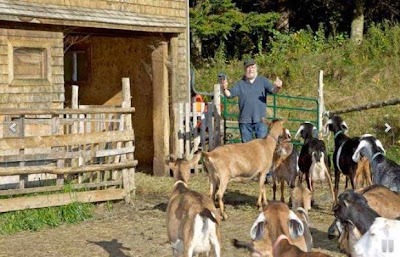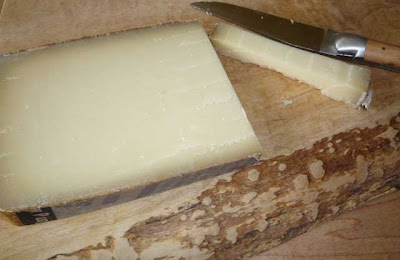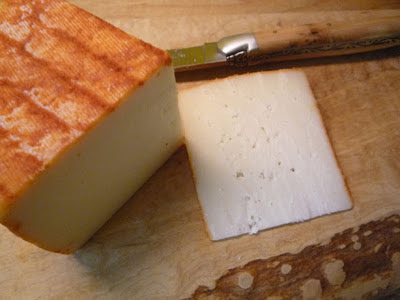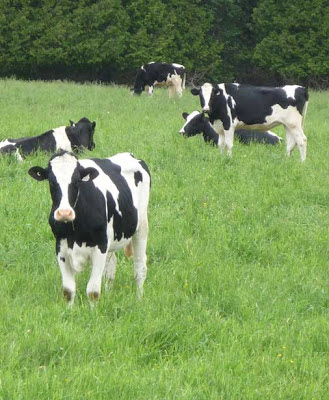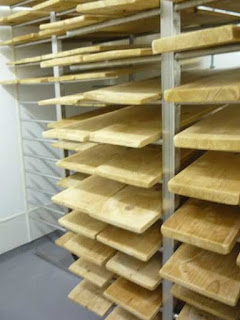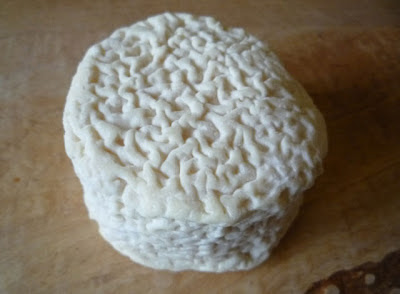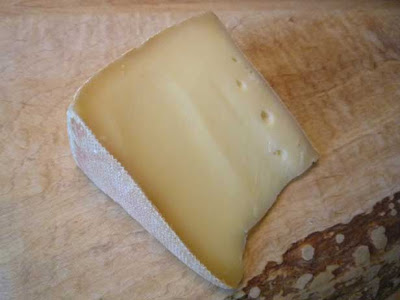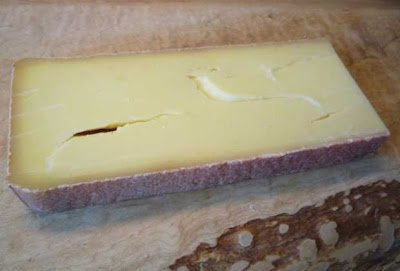Valbert is one of Québec's finest artisanal
cheeses produced by La Fromagerie
Lehmann located in Hébertville in the Saguenay-Lac-St-Jean region of
Québec.
Valbert
is a non-pasteurized cow-milk cheese with a firm, semi-cooked, pressed paste. Valbert
is a large mountain style 6 KG cylindrical wheel that is aged a minimum of 6 months.
The brushed rind has a golden-pink hue with the name Valbert embedded in its
rind. The firm, cream coloured paste has small crevices that develop as it
ages.
The Valbert
I selected is aged 12 months. It has a chewy texture with a wonderful nutty,
buttery flavour and quite a pronounced lingering fruity taste. It paired nicely
with a white Riesling.
Valbert,
received its name in homage of the Swiss hamlet the Lehmann family is originally
from, located in the foothills of the Jura mountains.
Jacob and
Marie Lehmann and their children arrived in Lac-St-Jean and started farming
in 1983. The area's cool climate, the high quality grasslands due to the fertile
soil and the Lehmann's passion for the love of the land all play an important
role in the distinguished cheeses produced at La Fromagerie Lehmann.
The
Lehmann's selected the Brown Swiss cow for their farm, as this breed is
distinguished for its ability to transform grass and hay in one of the richest
milk. For generations, the Brown Swiss has also made its mark in the production
of high quality cheese.
From
when they young and even today, the Lehmann children Sem, Isaban and Léa have
all been involved. Whether it's caring for the animals and pastures, helping with the milk
and cheese production to the marketing duties, every member of the family plays
an important role to achieve a delicious and acclaimed product.
Kénogami (a soft washed rind cheese), Pikauba (a semi-firm pressed paste cheese) and Valbert are all award winning artisanal cheeses produced by La Fromagerie Lehmann.
According
to Jacob Lehmann;
“Since the land is so precious, we must take
care of it. We do not use GMOs, pesticides or chemical fertilizer. We count on
a large variety of forage plants to provide a healthy diet of hay for our
animals in the summer and grains in the winter.”
“At “Fromagerie Lehmann”, our entirely
artisan production is based on a balance between the plants, the animals and
the humans in creating a natural-flavoured, durable product.”
“Artisan products …. a philosophy, a way of
life.”
Jacob Lehmann of Fromagerie Lehmann was the laureate of Le Renaud Cyr 2012. A recognition of
his savoir-faire and contribution to Quebec's artisanal produce and cuisine.
Source:







